The most impressive thing about Pirates was the set. I helped with act 1, but
of course I have no pictures.
My other contribution was a seagull that unfurled it's wings and flew off stage
just after the curtain rose on the first act. For reasons that were amusing at the time
the bird was named Dumbo.
|
Pirates of Penzance
Spring 2003 |
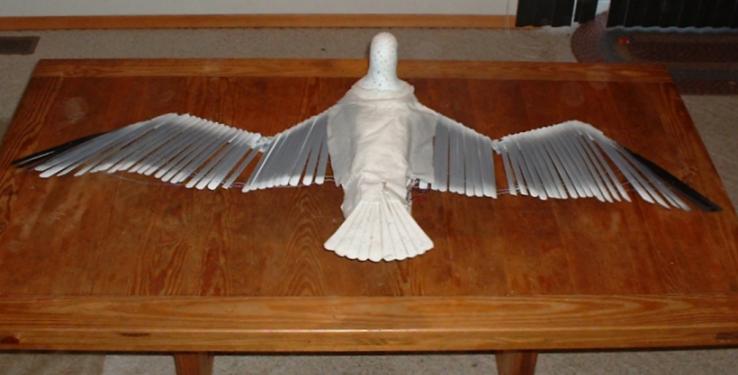
|
|
Dumbo's wing motion was radio controlled, and he was pulled off stage with a cable
attached to his head. Another cable (about 20' long) was mounted to the base of
Dumbo's tail and was attached to a pipe above the stage near front center. This
second cable acted as the radius of a circle with the origin at the pipe. The
head cable just made Dumbo follow the circle from the stage floor and up so that
he was about 12' off the stage when he exited stage right.
|
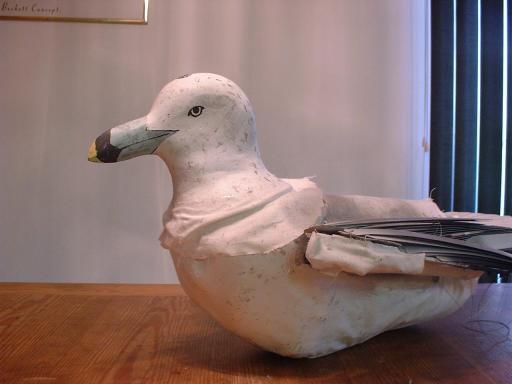
|
|
Dumbo's frame is aluminum except for the center piece that
runs the length of the body - that's steel. Inside there
are two big honking servos mounted to a piece of wood, one
servo per wing. The head is fiberglass in epoxy resin. I
figured the head would take a beating since it was sure to
bump into something hard or have some other mishap. The
central piece was made of steel for a similar reason, namely
I wanted something strong in there so it didn't crumple in
an accident or bend under the stress of being pulled at high
speed off the stage.
|
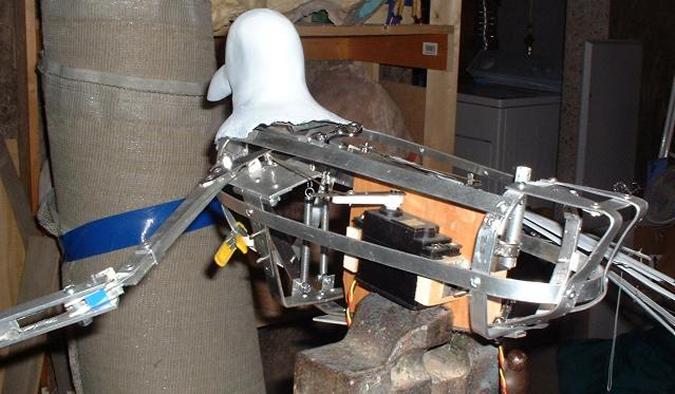
|
|
The wings were designed to do one thing - open. Each wing
was made of three sections that approximated the upper arm,
lower arm, and finger extension of an actual wing. One cable
was mounted so that as the shoulder extended the cable would
extend the elbow. Then another cable opened the wrist joint
in response to opening the elbow. The servo for each
wing started the process by pulling a lever to extend the shoulder.
|

|
|
The feathers were leftover slats from horizontal blinds. They were
slightly curved, which gave them linear strength. I mounted them to
the leading edge of the wing with a loose loop of wire and then tied
thread along the trailing edge with just enough slack so that they
would be evenly spaced when the wings opened.
|

|
|
The wings were powered by4 D-cell batteries that were threaded around
the innards, mostly near the tail. There was also a remote kill switch
that saved the batteries and removed the load on the servos. This was
handy because Dumbo was left hanging in the rafters fir the entire first
act, which lasted over an hour.
|

|
|
Here you can see that the wingspan was about 5'6". I read somewhere
on the net that some gulls have wingspans of up to 7'. So I made Dumbo
a bit on the large side because I knew that unless I spent hundreds of
dollars on machined parts I'd never get all the parts inside a bird
as small as the ones around here, which have wingspans closer to 4'.
|
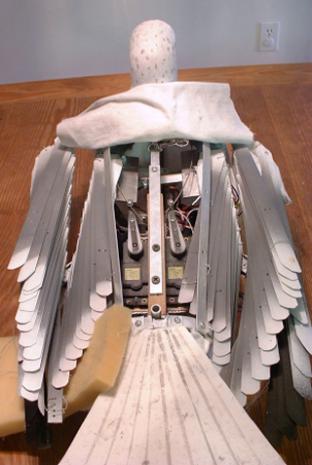
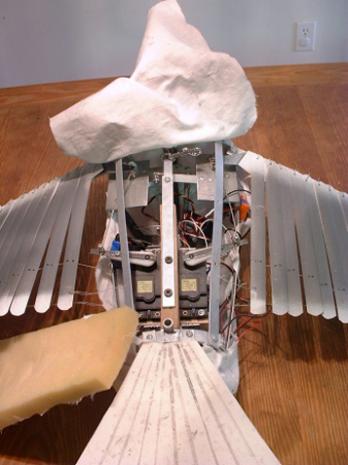
|
|
To set Dumbo up I had to furl the wings. This meant nesting the feathers
so they would spread without getting tangled. Here you can see the furled
and unfurled positions of the feathers, and how the servos operated.
|
